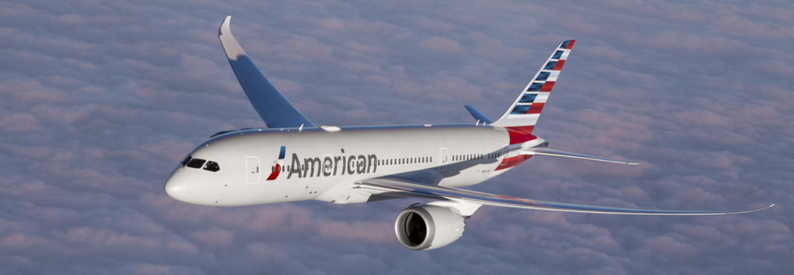American Airlines Expands Fleet with A321neo(XLR) Orders

American Airline has announced significant plans to enhance its long-haul international fleet by 2029. During the fourth quarter investors call for 2024, Scott Long, the company’s Vice President of Investor Relations and Corporate Development, revealed that American Airlines anticipates receiving its first Airbus A321-200neo(XLR) later in 2025. This addition is part of a broader strategy to expand the airline’s long-haul capable fleet from approximately 125 aircraft to nearly 200 by the end of the decade.
The airline currently holds an order for fifty Airbus A321neo(XLR) aircraft, with the majority expected to be delivered between 2025 and 2029. Devon May, Chief Financial Officer of American Airlines, confirmed that the airline aims to operate around forty of these extended-range narrowbody jets by 2029. The A321neo(XLR) is highly regarded for its extended range and fuel efficiency, making it an ideal choice for American Airlines’ expanding international routes.
To date, Airbus has unveiled only one future A321neo(XLR) for American Airlines: N470AN (msn 11520). However, a specific delivery date for this aircraft has not been set. American Airlines has informed ch-aviation that it will provide an updated fleet delivery schedule in February 2025, offering more clarity on the arrival timeline for this important addition to their fleet.
In addition to its narrowbody expansion, American Airlines is also evaluating its widebody fleet strategy. Robert Isom, the company’s President and Chief Executive Officer, mentioned that while discussions are ongoing with both Airbus and Boeing regarding new widebody orders, there are currently no concrete plans to place additional orders. Instead, the airline plans to continue operating its existing fleet of Boeing 777-300ERs—twenty in total with an average age of 11 years—for the foreseeable future. These aircraft are slated for retrofitting with new suites to enhance passenger comfort and modernize the fleet.
When addressing the future of the Boeing 777-200ERs, of which American Airlines operates forty-seven with an average age of 24.2 years, Isom stated, “We’ve got a decision to make about the B777-200ERs at some point in time, whether we reconfigure them or do something else.” This indicates that the airline is actively assessing the best path forward for these aging aircraft, potentially exploring options for reconfiguration or replacement to maintain fleet efficiency and performance.
American Airlines’ widebody fleet currently consists of forty-seven Boeing 777-200ERs, twenty Boeing 777-300ERs, thirty-seven Boeing 787-8s, and twenty-two Boeing 787-9s. Additionally, the airline has orders for fifty Airbus A321neo(XLR)s and twenty-five Boeing 787-9s, with five more to be leased from Boeing Capital. This diverse fleet composition allows American Airlines to efficiently manage both its short-haul and long-haul operations, catering to a wide range of passenger needs and route demands.
Financially, American Airlines concluded the year with total operating revenue of USD 54.2 billion and a net profit of USD 846 million, representing a 2.7% and 2.9% increase over 2023, respectively. Furthermore, the airline achieved a significant milestone by reducing its total debt by USD 15 billion from peak levels in mid-2021, accomplishing this full year ahead of schedule. Devon May highlighted the progress in debt reduction, stating, “We ended the year with total debt of USD 38.6 billion and net debt of USD 31.6 billion, our lowest net debt since 2015.” The next financial goal for American Airlines is to reduce total debt to below USD 35 billion by the end of 2027, underscoring the airline’s commitment to strengthening its financial health and operational stability.
Looking ahead, American Airlines’ strategic fleet expansion with the Airbus A321neo(XLR) and careful management of its widebody fleet positions the airline for sustained growth and enhanced competitiveness in the global aviation market. By increasing its long-haul capable fleet and optimizing its existing widebody aircraft, American Airlines aims to meet the growing demand for international travel while maintaining efficiency and profitability.
As the airline continues to integrate its plans with Asiana Airlines, the synergy between the two carriers is expected to further bolster American Airlines’ network and service offerings. The ongoing fleet modernization program, coupled with robust financial management, ensures that American Airlines remains a dominant player in the highly competitive aviation industry.
American Airlines’ commitment to expanding its fleet with the Airbus A321neo(XLR) and its strategic approach to managing its widebody aircraft demonstrate the airline’s dedication to meeting future travel demands and maintaining its leadership position in the global market. With continued focus on fleet modernization and debt reduction, American Airlines is well-equipped to navigate the evolving landscape of international aviation.
Related News : https://suspicious-zhukovsky.67-21-117-18.plesk.page/?s=American+Airlines
Sources: AirGuide Business airguide.info, bing.com, ch-aviation.com
